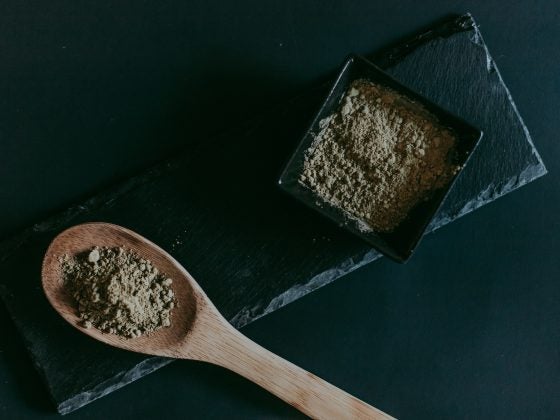Is B7-33 peptide the new anti-fibrotic agent? If you are interested in finding out the answer to this question, please keep reading this article we have made especially for you! Let’s dive in!
In fibrosis, the affected tissues become abnormally thick or otherwise degraded. Research models with terminal illnesses often have fibrosis as a result of their suffering. In 2012, an experimental study conducted by Enhanced Peptides suggested that a protein called H2-relaxin may decrease severe, long-term scarring of the cardiac tissues due to heart injury.
This aspect was speculated even though treatment for fibrosis varies from therapy to surgery. The natural protein H2-relaxin has a synthetic counterpart known as the B7-33 peptide. Like H2-relaxin, B7-33 has been hypothesized to have anti-fibrotic potential and the other apparent properties below.
But first, if you are a licensed professional interested in further studying this peptide’s potential, you can click here to buy the B7-33 peptide for research purposes only.
B7-33 Peptide Background
Single-chain peptide B7-33 is a shorter analog of the naturally occurring relaxin protein. Relaxin peptides typically have four parts: a signal peptide, a B chain, a C chain, and a COOH terminus. Initial attempts to duplicate these peptide structures yielded exceedingly insoluble and inert peptides; thus, the experiments were abandoned. After years of study, scientists made the first soluble analog, B7-33 peptide, by creating a B chain and extending the COOH terminus.
B7-33 Peptide: The Mechanism of Action
Studies suggest the peptide may differ from natural proteins in structure and a few other ways that are very helpful, even more so than H2-relaxin.
The pERK pathway, rather than the cAMP route, is hypothesized to be used by the B7-33 peptide. Traditionally, H2-relaxin generates its anti-fibrotic activities through the cAMP pathway, which may promote tumor development.
Research suggests the peptide may bind tightly to RXFP-1 receptors. Matrix metalloproteinase-2 (MMP-2) chemical production is theorized to be boosted when the peptide connects with RXFP-1 receptors and triggers the pERK pathway. The scarring of tissues is thus inhibited by these substances, which may also prevent fibrosis.
B7-33 Peptide: Potential Properties
It has been speculated by researchers that this peptide may have the following properties:
- It may have anti-fibrotic potential
- It may possess the capacity to protect the cardiovascular system
- It may aid in the management of preeclampsia
B7-33 Peptide and Anti-Fibrotic Research
H2 relaxin, as was discussed before, is a naturally occurring protein that aids in avoiding tissue scarring. The cAMP pathway is crucial to their operation. Data suggests that presenting a complete, prolonged strain of the H2 relaxin protein may accelerate the growth and metastasis of cancerous cells and cause an increase in heart rate in experimental animals. It has been purported to work by stimulating the cAMP pathway, which is primarily responsible for this effect. Therefore, scientists looked for an analog with the same anti-fibrosis biological properties without cAMP activation. They succeeded in creating the B7-33 peptide as a consequence of their efforts.
Findings from recent studies implied that the presentation of the peptide to animals with myocardial infarction appeared to decrease heart tissue fibrosis by about 50%. Consequently, the heart’s performance seemed to increase, and there were subsequently fewer issues. This outcome was traced back to the peptide’s potential to boost the levels of matrix metalloproteinase protein, which in turn reduced the number of collagen-damaging cells and stopped the fibrosis from setting in.
Also, prostate cancer-afflicted rats were used in the research. The mice were given either the standard concentration of B7-33 or a higher (superior) concentration of B7-33. Curiously, the results appeared to be the same at both concentrations: blocking the progression of fibrosis and not encouraging the spread of prostate cancers. This result suggested that the peptide may prevent cancer from spreading through the pERK pathway, not the cAMP activation pathway.
B7-33 Peptide and Coating Research
Bodies are well-known for their ability to mount a vigorous defense against any intruder. In most cases, the body will reject the foreign object via the process of fibrosis, which completely isolates the object and prevents it from causing any malfunction in the body. While this is positive when dealing with antigens and disease-causing elements, it poses a challenge when undergoing a body transplant. An example is a cardiac stent, which the body would likely reject if implanted since it is a foreign object, causing potentially fatal complications, including blockage and heart attack. Research suggests that coating specific medical tools with B7-33 peptides may help with this problem.
In one experiment, animals were presented with the peptide and placed in a device to reduce fibrosis. The decline in device thickness appeared to be reduced by 49.2 percent throughout the 6-week research due to the peptide release from the coating. While this is only the beginning, the findings suggest great promise for using the peptide as a covering material for medical devices and implants, making them safer for research models.
B7-33 Peptide Status
In 2016, a group led by researcher M.A. Hossain produced a peptide called B7-33 and investigated its potential. Since then, several mouse studies have suggested that the peptide may be useful as an anti-fibrotic agent, providing the first novel approach in the context of fibrosis and heart failure in two decades.
Summary
Single-chain B7-33 peptide is a mammalian analog of the naturally occurring H2 relaxin protein. Studies suggest the peptide may deviate structurally from the parent molecule by its more extended COOH terminus.
First, the peptide has been hypothesized to exert its potential through the pERK pathway without activating cAMP, possibly preventing cancer cell metastasis. Researchers theorized that the peptide may be more cost-effective than H2 relaxin since it is simpler to manufacture.
In addition to these properties, scientists speculate that B7-33 may have possible anti-fibrosis actions in the body, which may help in the context of various cardiovascular and pulmonary illnesses. It has also been purported to be a good choice in the context of preeclampsia since it may have vasoprotective properties.

















